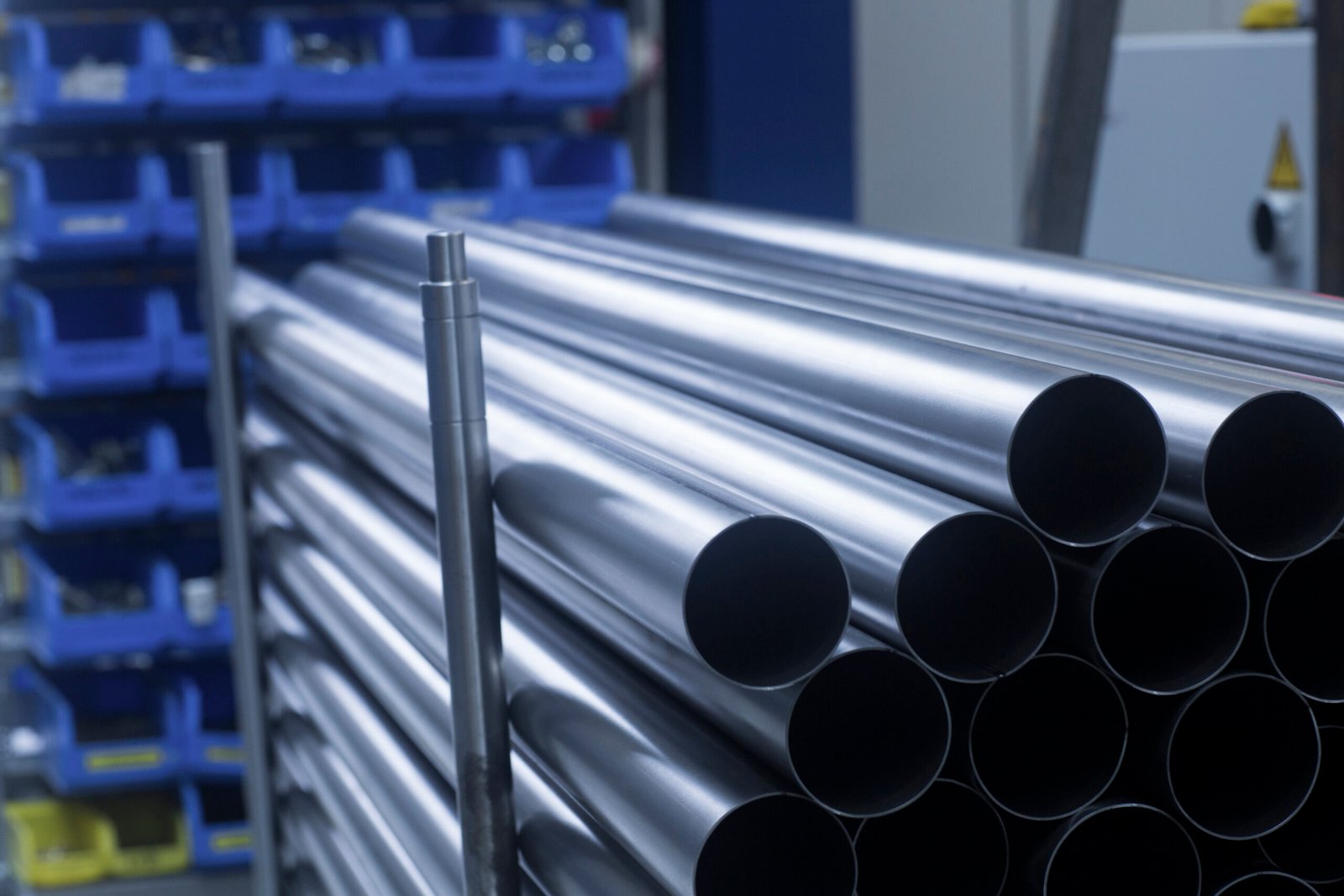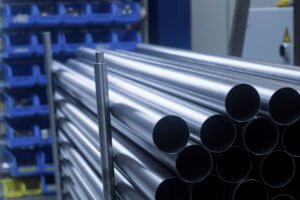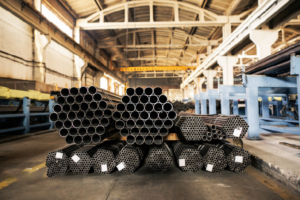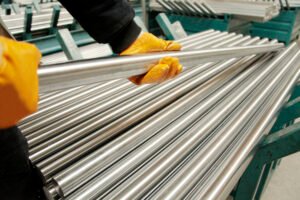Schedule 40 Stainless Pipe Size & Weight Chart
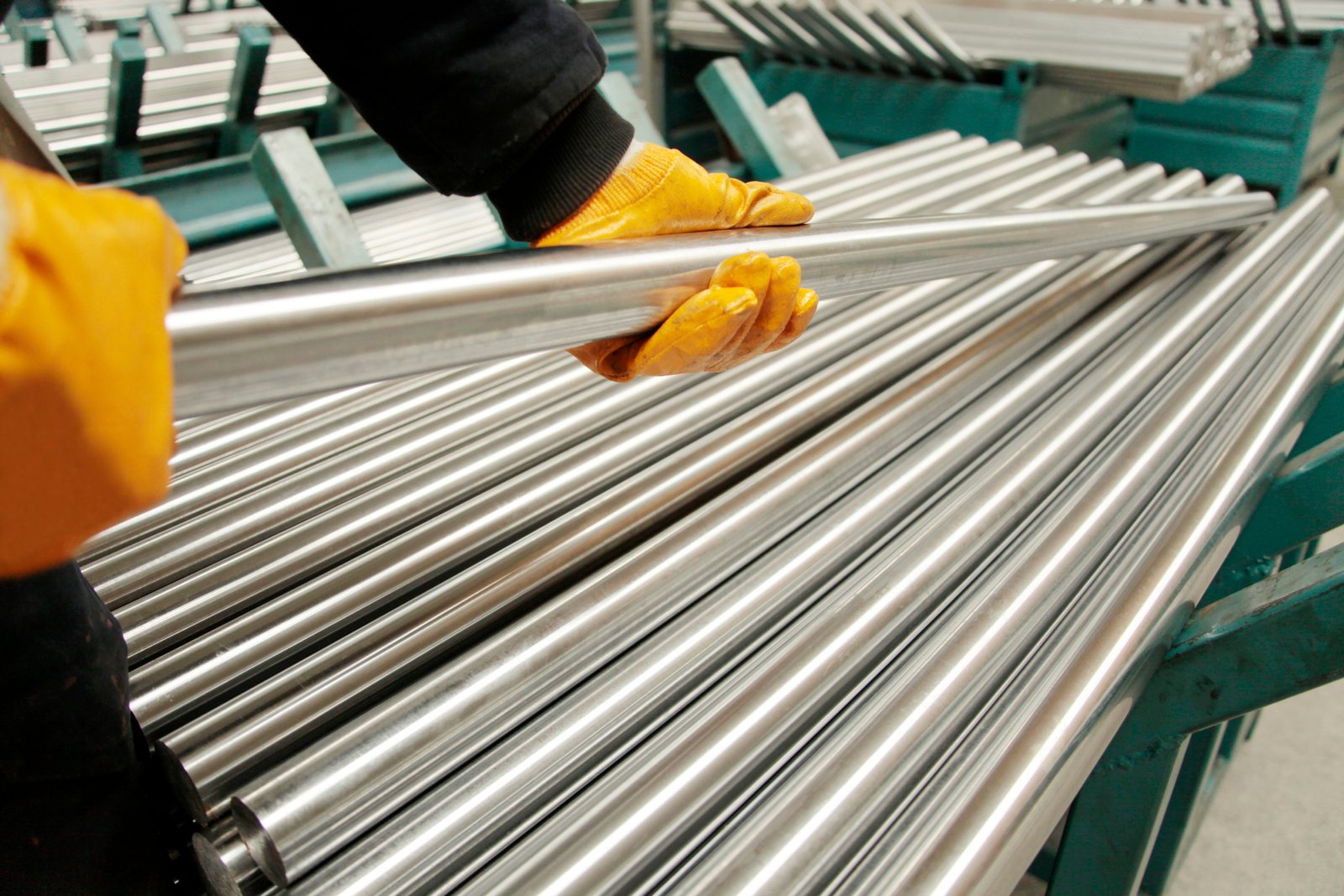
Struggling to decode Schedule 40 stainless pipe charts? You're not alone. Misinterpreting these specifications can lead to costly procurement errors, project delays, and structural integrity issues. The key to success lies in understanding the data and applying it correctly to your project's unique demands.
A Schedule 40 stainless pipe size and weight chart provides standardized dimensions, including Nominal Pipe Size (NPS), actual Outside Diameter (OD), wall thickness, and weight per unit length. This information is crucial for engineers, designers, and procurement managers to ensure compatibility, structural integrity, and accurate material estimation.
This guide will demystify these charts for you. We'll break down each component, from the often-misunderstood Nominal Pipe Size (NPS) to the critical calculations for weight and logistics planning. As we go, I'll share insights from my experience at MFY, helping clients worldwide avoid common pitfalls and select the perfect materials for their applications, ensuring their projects are built on a foundation of precision and reliability.
In my role as Global Business Director at MFY, I’ve seen firsthand how a small misunderstanding of pipe specifications can snowball into a major operational headache. The standards, primarily governed by bodies like ASME1 (American Society of Mechanical Engineers), were created to bring uniformity to manufacturing and engineering, but the terminology can be counterintuitive. For instance, the "Nominal Pipe Size" (NPS) is more of a label than a literal measurement, a fact that often trips up even seasoned professionals. This guide is born from countless conversations with our clients—from construction contractors in Southeast Asia to equipment integrators in the Middle East—who need to get this right every time. Our integrated supply chain at MFY gives us a unique perspective, as we manage everything from raw material sourcing to final export delivery, allowing us to see how these specifications impact every stage of a project.
How to interpret the dimensions in a Schedule 40 stainless pipe size chart?
Feeling overwhelmed by columns of numbers labeled NPS, OD, and Wall Thickness? It's a common frustration that can make selecting the right pipe feel like guesswork. A single mistake here can compromise your entire system, leading to rework and budget overruns. Let's make it simple.
To interpret a Schedule 40 pipe chart, understand that Nominal Pipe Size (NPS) is a reference name, not a direct measurement. The Outside Diameter (OD) is a fixed value for each NPS, while "Schedule 40" defines the specific wall thickness, which determines the pipe's strength.
Understanding these key columns is the first step toward mastering pipe specification. It transforms the chart from a confusing jumble of data into a powerful tool for precision engineering and procurement. We'll explore the relationship between these values, focusing on the critical distinctions that are often overlooked. For example, many are surprised to learn that for pipes 12 inches and under, the NPS is significantly different from the actual OD. This knowledge is fundamental, and at MFY, we ensure our clients grasp these details to prevent incorrect orders. We've seen projects stall because a team ordered a 4-inch pipe assuming the OD was 4.000 inches, when in reality, it's 4.500 inches. This section will equip you with the foundational knowledge to read these charts with confidence, ensuring you select the right pipe for your application every single time.

At MFY, we believe an empowered client is a successful partner. The ability to correctly interpret a pipe dimension chart isn't just an academic exercise; it's a critical business skill that directly impacts project timelines, budgets, and safety. A typical Schedule 40 stainless steel pipe chart is structured around a few core data points, but the interplay between them is what truly matters. I often tell the story of a client in India, an EPC contractor working on a new water treatment facility. They were on a tight schedule and needed to order several hundred meters of stainless steel pipe. Their junior engineer, accustomed to tube measurements where the outer diameter matches the nominal size, nearly placed a massive order based on the wrong OD assumptions. A quick consultation call with our technical team at MFY helped them identify the discrepancy between NPS and OD for the sizes they needed. We walked them through the ASME B36.19M standard2 on a shared screen, pointing to the specific columns and explaining the historical context. This simple act of clarification saved them from ordering incompatible materials, which would have resulted in significant financial loss and a multi-week delay. It's this kind of practical guidance, backed by our deep supply chain expertise, that defines our approach. We don't just sell steel; we provide the clarity needed to use it effectively.
Deconstructing Nominal Pipe Size (NPS) vs. Outside Diameter (OD)
The most common point of confusion when reading a pipe chart is the relationship between Nominal Pipe Size (NPS) and Outside Diameter (OD). NPS is a North American set of standard sizes for pipes used for high or low pressures and temperatures. It’s crucial to understand that NPS is a dimensionless designator; it’s a name, not a measurement. The actual physical measurement you can take with a caliper is the OD.
The relationship between these two values follows a simple but vital rule. For pipes with an NPS from 1/8" up to 12", the OD is always larger than the NPS value. For example, a 2-inch NPS pipe has an actual OD of 2.375 inches. A 6-inch NPS pipe has an OD of 6.625 inches. This historical convention dates back to when pipe sizes were based on the inside diameter (ID), but as wall thicknesses evolved, the OD became the constant for a given NPS to ensure interchangeability of fittings.
However, for pipes with an NPS of 14" and larger, the rule changes. From this size upwards, the NPS value is equal to the OD. A 14-inch NPS pipe has an OD of exactly 14 inches. A 20-inch NPS pipe has an OD of 20 inches. Grasping this two-part rule is fundamental. We once assisted a manufacturing client who was designing a skid-mounted processing unit. Their CAD models were based on the assumption that NPS equaled OD for all sizes, a mistake that was only caught during our pre-production review. Correcting their designs to reflect the actual ODs saved them from costly fabrication errors and ensured their equipment would connect seamlessly to the existing infrastructure on-site.
The Significance of "Schedule" (Sch) in Wall Thickness
Once you understand NPS and OD, the next critical dimension is the wall thickness, which is defined by the "Schedule" number. The Schedule (Sch) number is a measure of the pipe's ability to withstand internal pressure. For a given NPS, a higher schedule number means a thicker pipe wall. Therefore, a Schedule 80 pipe will have a thicker wall than a Schedule 40 pipe of the same NPS, making it suitable for higher-pressure applications.
For stainless steel pipes, the primary standard is ASME B36.19M, which covers dimensions for stainless steel pipe. It introduces Schedule numbers with an "S" suffix, such as Sch 5S, 10S, 40S, and 80S. A Schedule 40 pipe and a Schedule 40S pipe have the same wall thickness for NPS 1/8 to NPS 10, inclusive. Above that, the dimensions can differ. Schedule 40 is a very common, general-purpose choice used in a vast range of applications, from fluid transport in food and beverage processing to structural components in construction.
The wall thickness directly impacts not only the pressure rating but also the pipe's weight, cost, and internal diameter (ID). A thicker wall means more material, leading to a higher cost and weight per foot. It also reduces the internal bore, which can affect flow rates. When a client from the chemical industry approaches us at MFY, their primary concern is often pressure containment. We work closely with their engineers to match the process requirements with the appropriate schedule, ensuring safety and performance without over-engineering the solution and incurring unnecessary material costs.
Putting It All Together: A Practical Chart Example
To solidify this understanding, let's look at a simplified version of a Schedule 40 Stainless Steel Pipe Chart. This table illustrates the relationship between NPS, OD, and Wall Thickness for a few common sizes. Notice how the OD is consistently larger than the NPS for the sizes shown below 14 inches.
| Nominal Pipe Size (NPS) | Outside Diameter (OD) (inches) | Wall Thickness (inches) | Inside Diameter (ID) (inches) |
|---|---|---|---|
| 1" | 1.315 | 0.133 | 1.049 |
| 2" | 2.375 | 0.154 | 2.067 |
| 4" | 4.500 | 0.237 | 4.026 |
| 6" | 6.625 | 0.280 | 6.065 |
| 8" | 8.625 | 0.322 | 7.981 |
| 12" | 12.750 | 0.406 | 11.938 |
As you can see, the Inside Diameter (ID) is a calculated value, derived from the OD and wall thickness (ID = OD - 2 * Wall Thickness). This ID is the critical dimension for calculating flow capacity. A project manager for a large-scale irrigation system in Southeast Asia once told me, "Cosmos, for us, it's all about flow rate." They needed to deliver a specific volume of water over a long distance. By using the chart, we helped them select a 12" Sch 40 pipe, ensuring the ID of 11.938 inches met their hydraulic engineering calculations precisely. It’s this practical application of data that turns a simple chart into an essential project planning tool.
NPS is a reference nameTrue
Nominal Pipe Size (NPS) is a standardized label, not an actual measurement of pipe dimensions.
OD equals NPS for all sizesFalse
Outside Diameter only equals Nominal Pipe Size for pipes 14 inches and larger; smaller pipes have larger ODs than their NPS.
What are the key size specifications for Schedule 40 stainless pipes?
You know how to read the chart, but what are the truly critical specifications you must define when ordering? Simply asking for a "2-inch pipe" is not enough and can lead to receiving the wrong material. Precision is everything in procurement and engineering.
The key size specifications for Schedule 40 stainless pipes are the Nominal Pipe Size (NPS), the Schedule (which defines wall thickness), the required length, and the specific stainless steel alloy grade (e.g., 304L or 316L) which dictates corrosion resistance and mechanical properties.
Beyond these basics, specifications like end finish (e.g., plain or beveled) and adherence to specific manufacturing standards3 (like ASTM A312) are also vital. In my work at MFY, I emphasize creating a complete and unambiguous specification sheet for our clients. This not only prevents errors but also streamlines the quoting and ordering process. For a distributor in Russia we work with, getting the alloy grade right is as important as the dimensions, as their end-users operate in harsh, corrosive environments. We will now delve deeper into each of these key specifications, providing the context you need to create a comprehensive and error-proof material request for your next project.
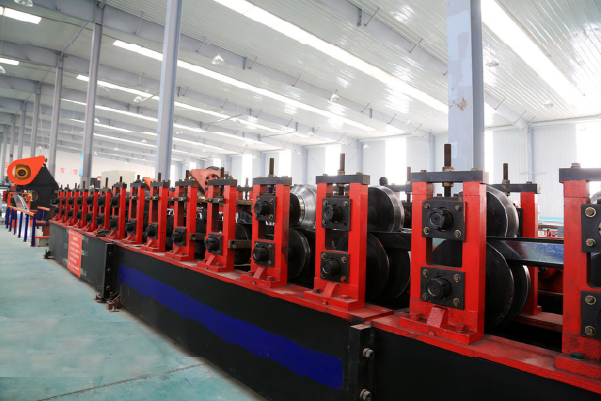
The difference between a successful project and a problematic one often lies in the details of the specification. A complete specification acts as a clear set of instructions for your supplier, eliminating ambiguity and ensuring you receive exactly what you need. At MFY, we often act as a consultative partner, helping clients build out these specifications. I recall working with a new equipment integrator who needed to source pipes for a food processing system. They specified "3-inch Sch 40 stainless pipe," but their request was incomplete. We initiated a discussion to clarify the missing details. What grade of stainless steel was needed? Given the sanitary requirements, 304L or 316L would be appropriate, but 316L offers superior corrosion resistance against certain cleaning agents. What length was required? Standard 20-foot lengths, or did they need custom cut-to-length pieces to minimize on-site labor? What about the end finish? Beveled ends would be necessary if they planned to butt-weld the sections together. By guiding them through these questions, we helped them refine their specification to "3-inch NPS, Schedule 40S, ASTM A312, 316L, 20-foot lengths, beveled ends." This level of detail ensured they received a product that was ready for fabrication, fully compliant, and perfectly suited for their application.
The Core Trio: NPS, Schedule, and Material Grade
The absolute foundation of any pipe specification rests on three pillars: Nominal Pipe Size (NPS), Schedule, and the material grade. We've established that NPS and Schedule together define the pipe's physical dimensions—its outer diameter, wall thickness, and inner diameter. However, the material grade is equally important, as it determines the pipe's chemical composition, mechanical properties, and, most critically, its corrosion resistance.
The most common grades for stainless steel pipe are from the austenitic family, primarily 304/304L and 316/316L. Grade 304 is the workhorse of the industry—versatile, with good corrosion resistance in most environments, and cost-effective. The "L" designation, as in 304L, indicates low carbon content, which is crucial for welded applications as it minimizes carbide precipitation and enhances corrosion resistance at the weld seams. Grade 316 contains molybdenum, which significantly boosts its resistance to chlorides and other corrosive agents, making it the standard choice for marine environments, chemical processing, and pharmaceutical applications.
Choosing the right grade is a balance of performance requirements and budget. For a construction project in a non-corrosive environment, specifying 316L would be an unnecessary expense. Conversely, using 304L in a coastal desalination plant, a common application for our Middle Eastern clients, would lead to premature failure. At MFY, our integrated supply chain allows us to source and stock a wide variety of grades, ensuring we can provide the optimal material for any given application, backed by the necessary Mill Test Reports (MTRs) to certify its composition and quality.
Beyond Dimensions: Manufacturing Tolerances and Standards
A professional specification goes beyond the nominal dimensions and includes the governing manufacturing standards and their associated tolerances. For welded and seamless austenitic stainless steel pipe, the most common standard cited in North America and globally is ASTM A312. This standard dictates not only the chemical and mechanical properties of various grades but also the permissible variations in dimensions, known as tolerances.
No manufacturing process is perfect, and tolerances define the acceptable range of deviation from the nominal values. For example, ASTM A312 specifies that the OD tolerance for most pipe sizes is +/- 0.031 inches, while the wall thickness tolerance is -12.5%. This means a pipe with a nominal wall thickness of 0.237 inches (like a 4" Sch 40 pipe) is permitted to have a wall as thin as 0.207 inches at some points. Understanding these tolerances is crucial for critical applications where precise wall thickness is required for pressure calculations or structural integrity.
As a supplier, MFY guarantees that our products meet or exceed the requirements of standards like ASTM A312. We recently worked with an engineering contractor on a high-pressure system where their calculations required a guaranteed minimum wall thickness. By understanding the -12.5% tolerance, we were able to supply them with a slightly higher schedule pipe that ensured even the thinnest point on the pipe met their minimum requirement, a solution that provided a robust safety margin and full compliance with their design specifications.
Finalizing the Spec: Lengths and End Finishes
The final details that complete a pipe specification are the required length and the type of end finish. Stainless steel pipes are typically produced in standard lengths, most commonly 20 feet (or 6 meters). However, many projects benefit from custom cut-to-length services to reduce scrap and minimize on-site labor. At MFY, our processing capabilities allow us to provide pipes cut to precise lengths as required by our clients' fabrication drawings.
The end finish is determined by how the pipes will be joined. The three common types are:
- Plain End (PE): The pipe is cut square. This is suitable for use with socket-weld fittings or slip-on flanges.
- Beveled End (BE): The pipe end is cut at an angle (typically 37.5 degrees) to prepare it for butt-welding, which creates a strong, continuous connection between two pipes. This is the standard for most process piping systems.
- Threaded End (TE): Threads are cut into the pipe end to allow it to be screwed into fittings. This is more common in smaller diameter, lower-pressure applications.
A client building modular equipment skids will often request plain end, cut-to-length pipes for socket welding, while a contractor building a long pipeline will require beveled ends on standard 20-foot lengths for efficient field welding. Specifying these final details ensures the material arrives at the job site ready for immediate use, saving valuable time and resources. Our ability to provide these value-added processing services is a key part of MFY's commitment to delivering comprehensive, one-stop solutions.
316L has better corrosion resistance than 304LTrue
316L contains molybdenum which enhances its resistance to chlorides and corrosive agents, making it superior to 304L in harsh environments.
Plain end pipes are best for butt-weldingFalse
Beveled ends are required for butt-welding, while plain ends are used for socket-weld fittings or slip-on flanges.
How does the weight of stainless pipes vary with size in Schedule 40?
You're planning your project, but have you considered the weight? The pipe's weight is a critical factor that influences everything from shipping costs to structural support requirements. Overlooking it can lead to logistical nightmares and unforeseen expenses that strain your budget.
The weight of Schedule 40 stainless pipes varies directly with their size. As the Nominal Pipe Size (NPS) increases, both the outside diameter and wall thickness generally increase, resulting in a significantly heavier pipe per foot. This relationship is non-linear and accelerates with larger diameters.
This variation has profound practical implications. For example, doubling the NPS from 4 inches to 8 inches more than doubles the weight per foot. Understanding this relationship is essential for accurate freight cost estimation, designing adequate pipe racks and supports, and planning for the necessary lifting equipment during installation. In my experience at MFY, helping clients accurately forecast pipe weight is a crucial part of project planning. We will now explore the specific factors that drive this weight variation, providing the insights you need to manage the logistical and structural challenges associated with your piping system.
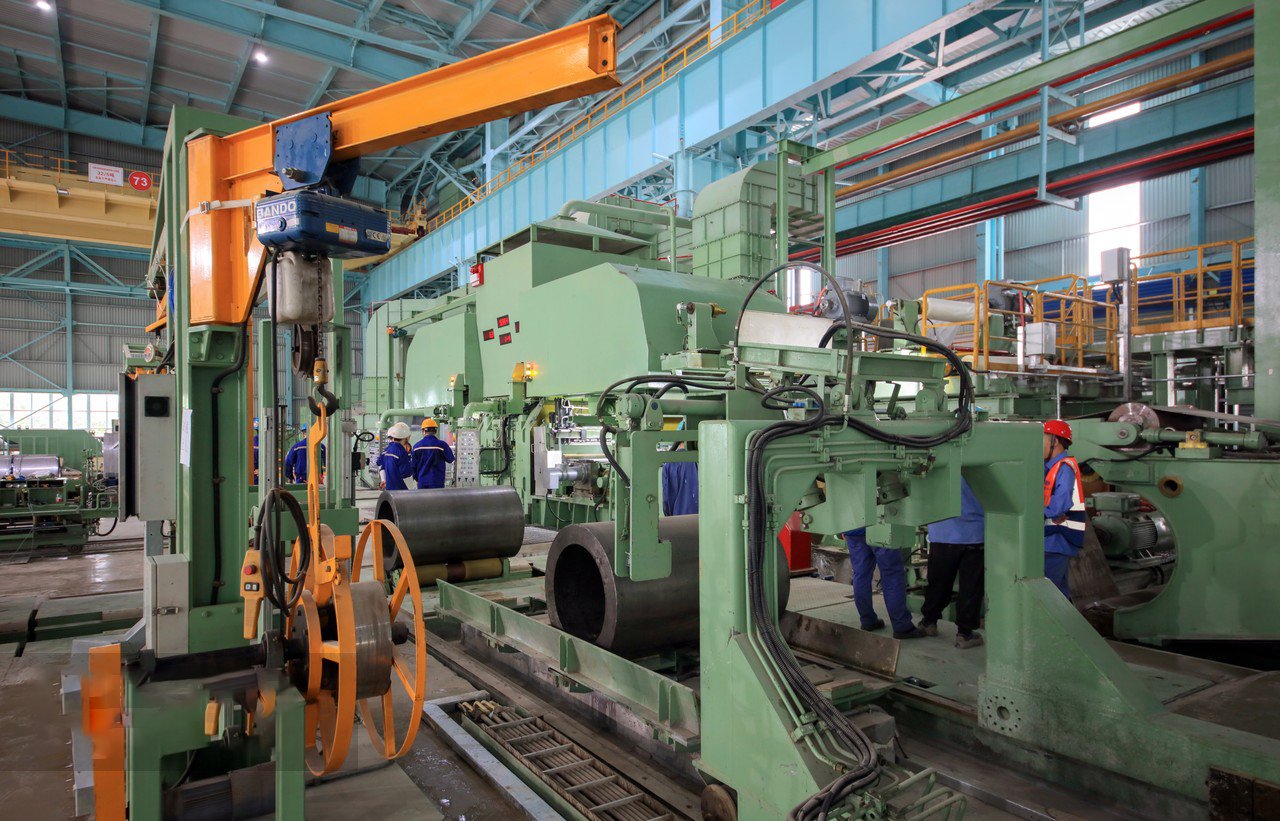
The logistical chain for a project is only as strong as its weakest link, and underestimating material weight is a common point of failure. I remember a case with a construction contractor in Southeast Asia who was building a multi-story industrial facility. They had meticulously planned their pipe runs but had based their lifting and transport plan on rough estimates. When the shipment of 12-inch Schedule 40 stainless pipe arrived from MFY, they realized the actual weight was nearly 50 lbs per foot—significantly more than their on-site cranes were rated for at that reach. This led to a costly, two-day delay while they brought in heavier equipment. This experience underscores why we, at MFY, emphasize a holistic approach. Our job doesn't end when the pipe is manufactured; it extends to ensuring our clients are prepared for its arrival. We provide detailed packing lists with accurate weights and dimensions, allowing project managers to plan their logistics with precision. This proactive communication prevents on-site surprises and keeps the project moving forward smoothly. The weight of a pipe is not just a number on a chart; it's a critical data point that impacts safety, cost, and efficiency from the port to the final installation point.
The Direct Correlation: How Dimensions Drive Weight
The primary driver of a pipe's weight is its volume of material per unit length. This volume is determined by its cross-sectional area, which is a function of the Outside Diameter (OD) and the Wall Thickness. As the Nominal Pipe Size (NPS) increases, both the OD and the wall thickness for a Schedule 40 pipe also increase. This combined effect leads to a rapid escalation in weight.
Let’s consider a practical comparison. A 2-inch NPS Sch 40 pipe has an OD of 2.375 inches and a wall thickness of 0.154 inches, resulting in a weight of approximately 3.65 lbs/ft. Now, let's look at a 4-inch NPS Sch 40 pipe. Its OD is 4.500 inches, and its wall thickness is 0.237 inches, yielding a weight of about 10.79 lbs/ft. The NPS doubled, but the weight nearly tripled. If we scale up again to an 8-inch NPS Sch 40 pipe (OD 8.625", wall 0.322"), the weight jumps to approximately 28.55 lbs/ft.
This non-linear increase is a crucial concept for project planners. The structural supports designed for a 2-inch line are completely inadequate for an 8-inch line. The freight costs for shipping a large order of 8-inch pipe will be substantially higher than for the same length of 4-inch pipe. At MFY, when a client provides a bill of materials, one of the first things our team does is calculate the total weight of the order. This information is vital for providing an accurate shipping quote and for advising the client on any special handling requirements they may need to prepare for.
The Subtle Influence of Material Density
While dimensions are the primary factor, the specific grade of stainless steel also plays a subtle role in the final weight due to variations in material density. Density is the mass per unit volume of a material. Most austenitic stainless steels, like the common grades 304 and 316, have very similar densities, typically around 8.00 g/cm³ (or 0.289 lbs/in³).
However, other families of stainless steel have different densities. For example, ferritic stainless steels like grade 430 have a slightly lower density of about 7.70 g/cm³. While this difference might seem small, it can add up over a large project. For a 1,000-foot order of 6-inch Sch 40 pipe, the difference in weight between a 304 austenitic grade and a 430 ferritic grade would be several hundred pounds.
This is why precise weight calculations should always use the density of the specific alloy being ordered. Although Schedule 40 pipe is most commonly produced in austenitic grades, it’s a detail that highlights the importance of technical precision. When we provide a weight chart or calculation at MFY, we base it on the density of the specified grade, ensuring the highest degree of accuracy for our clients' logistical and engineering calculations. It's this attention to detail that separates a simple commodity supplier from a true technical partner.
Practical Consequences: Logistics, Installation, and Structural Design
The variation in pipe weight has far-reaching consequences that impact nearly every phase of a construction or fabrication project. Understanding these implications is key to effective project management.
First, in logistics, freight costs are almost always calculated based on weight. A procurement manager who fails to account for the heavy nature of large-diameter pipes will face significant budget overruns on shipping. This is especially true for international shipments, where every kilogram matters. MFY’s export team works diligently to optimize packing and shipping routes to manage these costs for our global clients, but the fundamental driver remains the total weight of the order.
Second, during installation, the weight dictates the type of equipment and labor required. Small-diameter pipes can often be handled manually, but larger pipes (typically 4-inch NPS and above) require cranes, forklifts, or other lifting machinery. This affects site planning, safety protocols, and labor allocation. A heavier pipe also means slower installation progress, which must be factored into the project schedule.
Finally, for structural design, the weight of the pipe, plus the weight of the fluid it will carry, determines the load on pipe racks, hangers, and building structures. An engineer must use the correct weight-per-foot data to design supports that are strong enough to prevent sagging or failure over the lifetime of the system. We've seen designs where support spacing was calculated using data for a lighter schedule pipe, a mistake that could have led to catastrophic failure if not caught during the review process. The weight data from a pipe chart is therefore a critical input for ensuring the long-term safety and integrity of the entire installation.
Pipe weight increases with sizeTrue
As Nominal Pipe Size increases, both diameter and wall thickness grow, resulting in heavier pipes per foot.
All stainless grades weigh the sameFalse
Different stainless steel grades have varying densities; for example, ferritic grade 430 is less dense than austenitic grade 304.
How to calculate the weight per foot of a Schedule 40 stainless pipe?
Relying solely on charts can be limiting, especially if you need to verify data or work with custom dimensions. Knowing how to calculate pipe weight yourself is a valuable skill that empowers you to double-check specifications and plan with greater confidence. But the formula can seem intimidating.
To calculate the weight of a Schedule 40 stainless pipe, you can use a standardized formula that incorporates the pipe's outside diameter and wall thickness. This method provides a reliable theoretical weight, which is essential for accurate project estimation and logistical planning without needing a chart.
The formula itself is straightforward once you understand its components. It allows you to determine the weight for any pipe size, even if you don't have a reference chart handy. As part of my commitment to empowering our clients at MFY, I often walk them through this calculation. It provides transparency and helps build a deeper understanding of the material they are working with. In the following sections, we will break down the formula, provide a clear, step-by-step example, and discuss why the calculated weight might differ slightly from the actual measured weight.

Empowerment through knowledge is a core principle at MFY. When a client understands the fundamentals behind the products they buy, they make better decisions. Calculating pipe weight is a perfect example of this. It’s not about memorizing a complex equation; it's about understanding the logic behind it. This skill is particularly useful for engineers and estimators who need to validate data or work on projects with unique requirements that may not be listed in standard charts. I once worked with a client in our Russian market who was designing a custom heat exchanger. They needed to estimate the weight of a non-standard pipe size for their structural analysis. Instead of just giving them a number, our technical team showed them the calculation formula. This not only gave them the immediate answer they needed but also equipped their team with the ability to perform these calculations for future projects. This simple act of knowledge sharing builds trust and positions us as a partner invested in their success, not just a transactional supplier. The confidence to run your own numbers is a powerful asset in any technical field.
The Theoretical Weight Formula Explained
The weight of a pipe is fundamentally its cross-sectional area multiplied by its length and the density of the material. A simplified and widely used engineering formula for calculating the theoretical weight of stainless steel pipe in pounds per foot (lbs/ft) is:
Weight (lbs/ft) = 10.69 (OD - Wall Thickness) Wall Thickness
Let's break down each component of this formula:
- OD: This is the Outside Diameter of the pipe4 in inches.
- Wall Thickness: This is the nominal wall thickness of the pipe in inches.
- 10.69: This is a conversion factor or constant. It is derived from the density of austenitic stainless steel and the mathematical constants needed to convert the units correctly (from cubic inches of steel to pounds). This constant simplifies the calculation by combining π (pi), the material density (~0.289 lbs/in³), and unit conversion factors into a single number.
The term (OD - Wall Thickness) calculates the mean diameter of the pipe. Multiplying this by the wall thickness and then by π gives the cross-sectional area. The constant 10.69 conveniently bundles these calculations. It's important to note that this specific constant is for austenitic stainless steels (like 304/316). Using it for carbon steel or other alloys would require a different constant based on their respective densities.
A Step-by-Step Calculation Example
Let's apply the formula to a real-world example. We want to find the theoretical weight of a 4-inch NPS Schedule 40 stainless steel pipe.
Step 1: Find the Key Dimensions
First, we need the OD and Wall Thickness from a standard pipe chart.
- For a 4-inch NPS pipe, the OD = 4.500 inches.
- For a Schedule 40 pipe at this NPS, the Wall Thickness = 0.237 inches.
Step 2: Plug the Values into the Formula
Now, we substitute these values into our weight formula:
Weight (lbs/ft) = 10.69 (OD - Wall Thickness) Wall Thickness
Weight (lbs/ft) = 10.69 (4.500 - 0.237) 0.237
Step 3: Perform the Calculation
Weight (lbs/ft) = 10.69 (4.263) 0.237
Weight (lbs/ft) = 10.69 * 1.010331
Weight (lbs/ft) ≈ 10.80 lbs/ft
The calculated weight is approximately 10.80 pounds per foot. If you look at a standard weight chart, you'll see this value listed as 10.79 lbs/ft. The minor difference is due to rounding in the constant and published chart values. This simple, three-step process can be used for any Sch 40 pipe size, providing a reliable weight estimate for your planning needs.
Theoretical vs. Actual Weight: Understanding the Difference
It is crucial to understand that the value calculated using the formula is a theoretical weight. The actual weight of the pipe you receive may vary slightly. This difference arises from the manufacturing tolerances permitted by industry standards like ASTM A312.
As we discussed earlier, standards allow for a certain percentage of variation in the wall thickness and outside diameter. The wall thickness tolerance is typically -12.5%, meaning the wall can be up to 12.5% thinner than the nominal value at any given point. Since weight is directly proportional to the amount of material, a pipe manufactured closer to the lower end of the tolerance range will weigh less than the theoretical value. Conversely, a pipe with a wall thickness on the higher end of the tolerance will be slightly heavier.
For this reason, when planning critical lifts or calculating shipping costs for very large orders, it's wise to consider this potential variance. At MFY, our Quality Assurance team ensures that all our products fall within these specified tolerances. When a client needs a highly accurate weight for logistical purposes, we can often provide weight data based on actual production runs or provide a "per piece" weight on our packing lists, moving from a theoretical calculation to an actual measured value. This closes the gap between engineering theory and real-world execution.
Pipe weight depends on OD and wall thicknessTrue
The formula clearly shows pipe weight is calculated using outside diameter and wall thickness as primary variables.
10.69 constant works for all steel typesFalse
The 10.69 constant is specific to austenitic stainless steels; other alloys require different constants based on their densities.
What are additional resources for understanding stainless pipe specifications?
You've learned to interpret charts and calculate weights, but where do you turn for authoritative information or expert advice? Relying on scattered online sources can be risky. Having access to trusted resources is essential for ensuring your project's compliance, safety, and success.
Key additional resources include the official publications from standards organizations like ASME and ASTM, detailed supplier catalogs and technical data sheets, and direct consultation with experienced material suppliers. These sources provide the most reliable and in-depth information on stainless pipe specifications.
These resources form a pyramid of knowledge, from the foundational standards that govern the industry to the practical advice of experts who apply them daily. At MFY, we see ourselves as a key resource for our clients, providing not just materials but also the expertise to use them effectively. We encourage our partners to leverage these official documents and our team's experience to build a comprehensive understanding, ensuring every decision is an informed one. The following section will guide you on how to best utilize these valuable resources.

In today's information-saturated world, the challenge isn't finding information, but finding the right information. A quick internet search can yield conflicting data and outdated specifications. This is why cultivating a set of reliable resources is so important. I often advise our clients, especially those new to large-scale industrial projects, to build their own "technical library." This doesn't have to be a physical collection of books; it can be a curated set of bookmarks to standards bodies and a direct line to a trusted technical advisor. As a diversified group at MFY, with business units spanning from raw material trading to advanced manufacturing, we have a deep reservoir of knowledge. Our teams are constantly referencing standards and engaging with new industry research. When a client has a question—whether it's about the specific corrosion properties of an alloy in a unique chemical environment or the weldability of a certain grade—we can tap into this collective intelligence to provide a clear, accurate, and practical answer. Think of these resources not as a last resort, but as your first line of defense against misinformation and costly errors.
Your Foundation: ASME and ASTM Standards
The ultimate source of truth for pipe specifications is the official documentation from the standards organizations themselves. For stainless steel pipes, two key bodies are paramount:
- ASME (American Society of Mechanical Engineers): Their standards are crucial for pressure applications. ASME B36.10M covers the dimensions of welded and seamless wrought steel pipe, and ASME B36.19M specifically addresses stainless steel pipe dimensions. These documents are the definitive source for NPS, OD, and wall thickness for every schedule.
- ASTM International (American Society for Testing and Materials): Their standards define the material requirements. ASTM A312 is the go-to standard for seamless, straight-seam welded, and cold-worked welded austenitic stainless steel pipe. It specifies chemical composition, mechanical properties (like tensile strength and yield strength), and testing requirements for various grades (304, 316, etc.).
While purchasing these standards can be an investment, they are indispensable for any organization that regularly designs, builds, or procures piping systems. They provide the legal and technical foundation upon which all other resources are built. Having access to them resolves any disputes or ambiguities and ensures your projects are fully compliant with industry best practices.
Your Practical Guide: Leveraging Supplier Expertise
While standards provide the "what," an experienced supplier can provide the "why" and "how." A good supplier is more than a vendor; they are a technical partner. At MFY, our vision is to be the leading international trade and service brand in our industry, and "service" is the key word. Our sales and technical teams are trained to be consultants who can help you navigate the complexities of material selection.
This is where you can ask practical questions that standards alone can't answer:
- "For my application in a coastal environment, is the extra cost of 316L justified over 304L?"
- "What is the current market availability and lead time for 10-inch Schedule 40S pipe?"
- "Can you provide cut-to-length services and bevel the ends to save my team on-site fabrication time?"
I remember a client, an equipment integrator, who was struggling with material availability for a rush job. The specified pipe was out of stock with a long lead time. By working with them, our team was able to identify a functionally equivalent, readily available alternative from our extensive inventory that met all their performance requirements. This kind of collaborative problem-solving is a hallmark of a strong supplier partnership and can be one of your most valuable resources.
Your Quick Reference: Digital Tools and Reputable Catalogs
For quick estimates and day-to-day reference, digital tools and supplier catalogs are incredibly useful. Many reputable suppliers, including MFY, provide detailed online catalogs and technical resources on their websites. These are often easier to navigate than the dense official standards and present the information in a user-friendly format.
Additionally, numerous online pipe weight calculators and dimension charts exist. These can be great for quick, preliminary calculations. However, a word of caution is necessary. Always verify the source of these tools. Ensure they are provided by a reputable industry player. Free, ad-supported websites can sometimes contain outdated or inaccurate information.
The best practice is to use these digital tools for initial estimation but to always confirm the final specifications against an official standard or with your trusted supplier before placing an order. At MFY, we are developing our own suite of digital tools for our clients, aiming to integrate our deep product knowledge with easy-to-use interfaces. Our goal is to provide resources that are not only convenient but also backed by the same quality and reliability as our physical products.
ASME B36.19M covers stainless pipe dimensionsTrue
ASME B36.19M is specifically for stainless steel pipe dimensions, including NPS, OD, and wall thickness.
ASTM A312 defines chemical compositionFalse
ASTM A312 does define chemical composition, mechanical properties, and testing requirements for stainless steel pipes.
Conclusion
Mastering Schedule 40 pipe charts and specifications is not just a technical skill; it's a business necessity. Understanding NPS, OD, schedule, and weight empowers you to avoid costly errors, streamline logistics, and ensure project success. MFY is here to be your trusted partner in this journey.
-
Learn about ASME's role in ensuring uniformity in pipe manufacturing standards ↩
-
Explore the standards governing stainless steel pipe dimensions and tolerances ↩
-
Discover manufacturing standards and tolerances for stainless steel pipes ↩
-
Learn the correct methods and tools for measuring the outside diameter of stainless steel pipes. ↩
Have Questions or Need More Information?
Get in touch with us for personalized assistance and expert advice.
